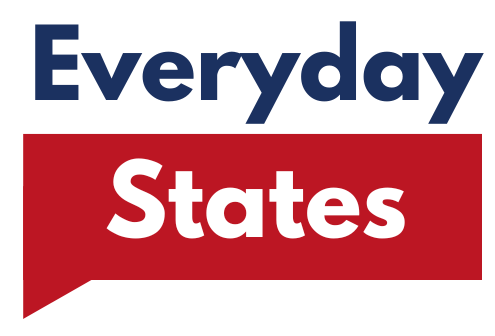The cost of education is rising, and students are feeling the pinch, especially when it comes to purchasing textbooks. The situation is further complicated by tariffs on imported materials, which have increased printing costs. Let’s delve into the top ten states where students face the highest textbook prices and explore the reasons behind these increases.
California

California students face some of the highest textbook prices in the country, with costs reaching upwards of $1,500 per semester. The state’s vast array of universities and colleges means there’s a high demand for educational materials. This demand, combined with tariffs on paper and ink, has driven prices up significantly. The high cost of living in California only adds to the financial strain on students. Many are now seeking cost-effective alternatives, such as digital textbooks and second-hand books, to alleviate their financial burdens.
New York

In New York, the average textbook cost is around $1,400 per semester. The state’s large population and numerous educational institutions create a high demand for textbooks, which, coupled with tariff-related price hikes, make it difficult for students to manage expenses. To cope, students are increasingly turning to digital resources and buying used textbooks. The shift towards online learning resources has become a necessity rather than a choice for many.
Texas

Texas students are also grappling with rising textbook prices, spending an average of $1,200 per semester. The state’s size and diversity mean that textbook prices vary, but the overall trend is upward. Tariffs on imported materials have increased production costs, which are passed on to students. Many are now exploring textbook rental services and online resources to reduce costs. This shift reflects a growing need for affordable educational materials in the state.
Florida

In Florida, students spend approximately $1,100 per semester on textbooks. The state’s growing population and influx of out-of-state students have increased demand, leading to higher prices. Tariffs on printing materials have only worsened the situation. As a result, students are increasingly relying on digital textbooks and sharing resources with peers to manage costs. This collaborative approach is becoming more common as students seek to minimize expenses.
Illinois

Illinois students face an average textbook cost of around $1,000 per semester. The state’s rigorous educational programs mean that textbooks are a significant financial burden. Tariffs affecting production costs have led many students to turn to online platforms and open educational resources. Universities are also implementing initiatives to provide students with access to affordable materials, reflecting a commitment to reducing educational costs.
Pennsylvania

In Pennsylvania, students typically spend about $950 per semester on textbooks. The high demand for educational materials and rising production costs due to tariffs have made it challenging for students to keep up. Many institutions are promoting open educational resources and encouraging the use of library services for free access to required readings. This approach aims to alleviate the financial burden on students and ensure they have access to necessary materials.
Ohio

Ohio students can expect to pay around $900 per semester for textbooks. The state’s diverse educational landscape contributes to varying prices, but the overall trend is concerning. Tariffs have led to increased costs for publishers, which are then passed down to students. To combat this, many Ohio universities are exploring partnerships with publishers to provide more affordable options. This collaboration reflects a growing recognition of the need for cost-effective educational resources.
Michigan

In Michigan, students face an average textbook cost of approximately $850 per semester. Higher education institutions are promoting digital resources and open educational materials to address rising textbook prices. However, tariffs on printing costs continue to pose challenges. Students are increasingly seeking alternative solutions, such as renting textbooks or utilizing online resources, to manage expenses. This shift underscores the need for affordable educational materials in the state.
North Carolina

North Carolina students spend around $800 per semester on textbooks. The state’s growing population and increasing enrollment in colleges and universities have driven demand for educational materials, leading to higher prices. As tariffs continue to affect production costs, students are seeking out alternative solutions. Renting textbooks and utilizing online resources have become popular strategies for saving money, reflecting a broader trend towards cost-effective education.
Georgia

Finally, Georgia students face an average textbook cost of about $750 per semester. The state’s diverse educational institutions contribute to varying prices, but the overall trend is concerning. Tariffs on imported materials continue to impact production costs, prompting students to turn to digital resources and open educational materials. This shift highlights the importance of affordable educational resources in supporting students’ academic pursuits.
The rising cost of textbooks is a significant concern for students across the United States, particularly in states where prices are highest. Factors such as tariffs on imported materials and high demand for educational resources have contributed to this trend. However, students are finding ways to navigate these challenges by exploring alternative solutions, such as digital textbooks and open educational resources. As the landscape of education continues to evolve, it is essential for institutions to prioritize affordability and accessibility to support students in their academic pursuits.





